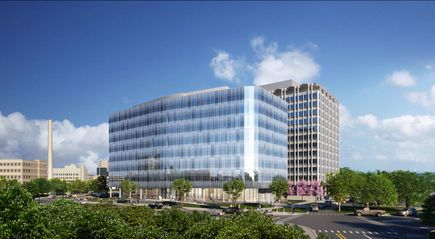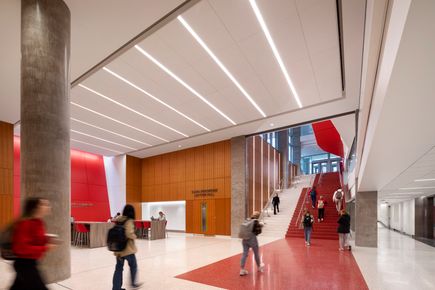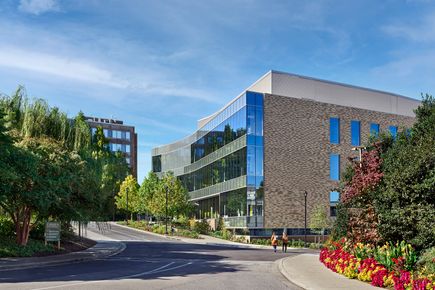Q&A with Katherine Ahrens About the Future of Work
Share

The global pandemic has altered the economic and professional landscape for people around the world. It is changing perceptions about the workplace and the value of working together in person. Many employees are asking, “Why should we go back to the office given that remote work has proven successful?” Senior Associate Katherine Ahrens, LEED AP, focuses on workplace strategy and design at Ballinger, helping companies plan office space that improves employee wellness and productivity. She shared insight into the evolving future of the workplace.
Do you predict a long-term increase in remote work?
Katherine Ahrens: Yes, for knowledge workers I think remote work is here to stay. But more importantly, I believe we’ll see an increase in hybrid workstyles and schedules that benefit overall productivity as well as employee work/life balance. Rather than a calendar-based model like being in the office in person Monday, Wednesday and Friday, schedules will be more individualized based on work tasks and personal commitments. As employers recognize that remote work is productive and enhances employee morale, I think we’ll see further disruption of the typical 9-5 schedule.
What are some keys to making remote work successful, for employees and companies?
Ahrens: A strong company culture is an important foundation for successful remote work. Leadership confidence that remote work is effective is a prerequisite. Another key is a commitment to formally addressing gaps created by remote work, for example identifying ways to facilitate mentorship and encourage relationships among people who are not working together directly.
How can employers leverage their real estate assets during these turbulent times?
Ahrens: I believe as the health crisis continues to shake out we’ll see a lasting impact on the way people work. I expect to see the ratio of individual to group space shift. In the past we allocated more space to the individual, but we’re seeing that reverse. Individual space isn’t as important because workers have the option of retreating to a home office. The focus is now on designing effective group workspace, since collaboration is a driver for coming to the office in person.
How can workplace designers best bring value to clients?
Ahrens: Research, strategy and planning are crucial and will become even more important to a successful design as we continue to learn about how people are returning to the office and why. As designers, we’ll need to be nimble: one metric we typically rely on is badge data, to understand who is entering and when. That metric has drastically changed and it may take time to discern meaningful patterns as workers return to the office. We expect to see a wider range of work styles and schedules, making the designer’s task more challenging. We’ll need to identify the right space types for a variety of tasks. The workplace of the future may be designed more like a college library. It’s a place you can go to collaborate with a group, socialize, or complete focused work. There will be less “owned” space dedicated to a particular individual or department, and more spaces that focus on completing specific tasks.
Workplace designers can add value by recognizing the specialized expertise needed to optimize not just the layout, but the overall employee experience. MEP systems have a considerable impact on the office environment. HVAC systems can play a role in reducing airborne transmission of infectious aerosols and can influence employee comfort in terms of temperature and acoustics.
What has surprised you the most about the shift to remote work?
Ahrens: Working from home with three kids, two babysitters and a partner on non-stop conference calls, it has surprised me that I now view the office as a tranquil sanctuary of productivity!
I’m surprised at how remote work has caused people to think differently about the meaning of an office. Back in March people were saying offices will be a thing of the past. Since then the pendulum has begun to swing back. I thought collaboration was the primary driver for in-person work but it’s not that simple. Employees turn to in-person work for a variety of reasons that vary from person to person and role to role. What makes in-person work attractive might include the technology that’s available in the office, the quiet environment, physical materials and objects, or socialization.
To be most effective, office space should build on those offerings and function as an amenity. Rather than a space with conveniences such as foosball tables and snacks, I’m referring to a more process- and productivity-driven amenity. A place that attracts workers because it facilitates the completion of tasks.



